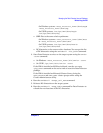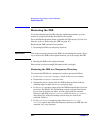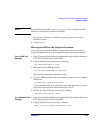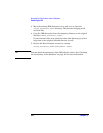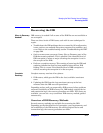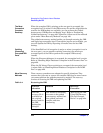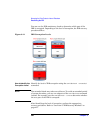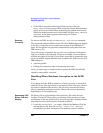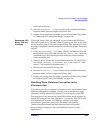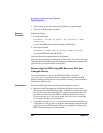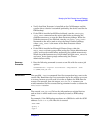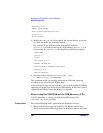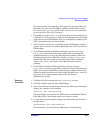
Managing the Data Protector Internal Database
Recovering the IDB
Chapter 9 421
Performing Guided Autorecovery
Guided autorecovery is the most convenient IDB recovery method. You
can perform it if the IDB recovery file and the original device used for the
IDB backup together with the IDB backup medium are available.
This method guides you through restoring the IDB and replaying
transaction logs since the last IDB backup. If the transaction logs are not
available, you can still update the IDB since the last IDB backup by
importing media.
Transaction replay updates the core part of the IDB. Binary files are not
updated and changes to binary files are lost.
The following are not available for the backups that were running from
the last IDB backup before the IDB corruption:
• Session messages
• Browsing of file versions (restores of complete objects are possible).
Import the catalog on the media used by the backups to recover the
changes.
• SIBF updates. Export and import the media used by the backups to
recover the changes.
Prerequisites Ensure the following before performing guided autorecovery:
• Mount a disk of the same size as before the disaster on the same
directories as at the IDB backup time (on Windows systems, the same
drive letters must be assigned). If this cannot be ensured, follow the
procedure for recovering the IDB to a different disk/volume layout.
You can use the -preview option of the omnidbrestore command
to see where the files will be restored.
• Verify that Data Protector is installed on the Cell Manager and the
system where a device is attached (preferably, the device used for the
IDB backup).
• If the IDB is installed on MC/ServiceGuard, run the cmhaltpkg
<pkg_name> command on the active node before performing the
guided autorecovery, to stop the Data Protector package. When the
guided autorecovery has finished, run the cmrunpkg <pkg_name>
command on the active node to start the Data Protector package,
where <pkg_name> is the name of the Data Protector cluster
package.



